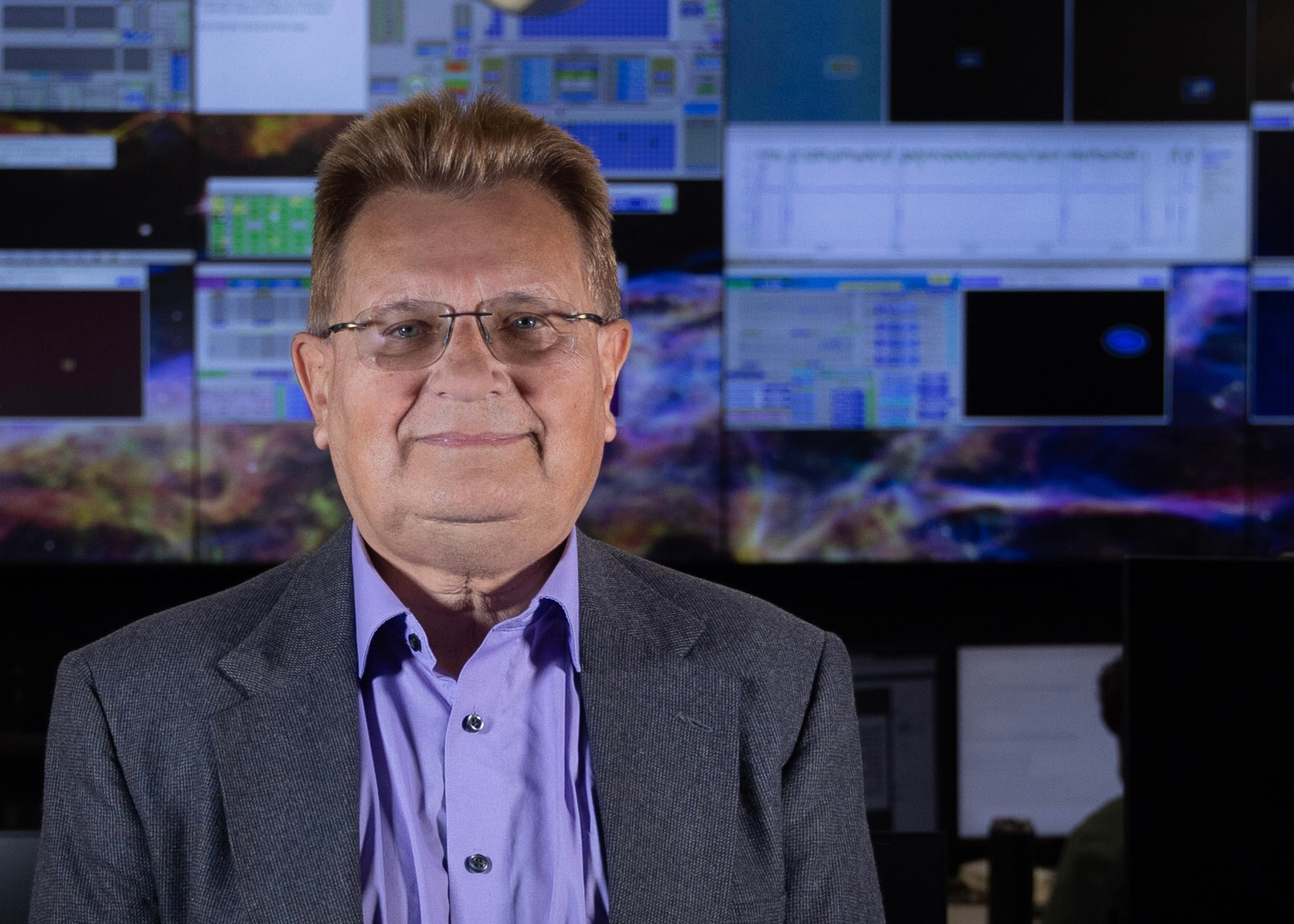Wearing gloves, University of Miami marine biologist Martin Grosell and his two colleagues sifted through hundreds of gallons of seawater filled with fish poop, extracting from the feces what would amount to just a few grams of fish carbonate crystals.
While the tiny pellets they collected during a weeklong field trip at Panama’s Achotines Laboratory may look worthless, their value in helping to offset one of climate change’s biggest impacts—ocean acidification—could be priceless.
And that is why Grosell and his fellow colleagues at the Rosenstiel School of Marine, Atmospheric, and Earth Science are leading a $1.45 million National Science Foundation study aimed at determining just how big of a role fish play in the global carbon cycle.
“The fish component is not incorporated to the extent it should be into current models that assess the carbon cycle in our oceans and how it influences climate,” said Grosell, professor and chair of the Rosenstiel School’s Department of Marine Biology and Ecology. “So, we’re missing a very big piece of the carbon cycle puzzle in terms of what we understand and what we can predict. And that missing piece is likely going to become more important as our oceans warm and become more acidic.”
What is known is that all marine fish ingest calcium-rich seawater and produce magnesium-rich calcium carbonate precipitates in their intestines, excreting it at high rates to the environment alongside and within their feces. “The production and excretion of these carbonates, which we call ichthyocarbonates, is a fundamental process, and it’s critical to their survival. Without it, fish would become dehydrated in seawater and die,” said Amanda Oehlert, an assistant professor in the Department of Marine Geosciences and the lead investigator of the three-year study.
As they sink, the ichthyocarbonates dissolve, making seawater more alkaline in ways that are not accounted for in current models.
About 15 years ago, Grosell and his colleagues estimated that fish produce 3 percent to 15 percent of the calcium carbonate in our oceans. “But technological advances have revealed that there are more fish in the sea than we initially appreciated in 2009,” Grosell explained. “So, we’ve revisited those calculations, estimating that the number is even greater. Fish may, in fact, be among the most prolific producers of carbonates in the ocean. So, we’re trying to lock that number down with more accuracy.”
But with the rate of production and excretion of ichthyocarbonates differing among species and being influenced by factors ranging from ocean temperature and pressure to the lifestyle and size of a fish, arriving at a more accurate estimate will be a gargantuan task, Grosell admitted. “It’s impossible to measure these rates in all 13,000 species of fish that produce these carbonates,” he said.
So, Grosell, Oehlert, and Rachael Heuer, a research assistant professor of marine biology and ecology, who studies the impact of ocean acidification and temperature on the physiology of marine fish and invertebrates, have selected a group of species representative of the global fish population, analyzing their size and behavior to determine how those factors influence the rates of calcium carbonate production.
The scientists are analyzing samples using a variety of methods and instruments, including mass spectrometry and a scanning electron microscopy. Interestingly, they already have learned that smaller fish are more critical to the production of ichthyocarbonates than larger fish.
“Smaller fish have higher metabolic rates, and we know that the production of ichthyocarbonates likely scales with metabolic rate. So, smaller species will likely produce more,” Grosell said. “Then, too, far more of the global fish biomass is made up of very small, young fish. Large and mature fish are rare and do not contribute a lot to the biomass. So, for that reason, size is an important factor. Temperature is also important because it dictates metabolic rate. And, of course, lifestyle—whether you’re looking at a sedentary, largely inactive benthic fish or a very active, fast-swimming epipelagic fish.”
The team started its work in earnest this summer, traveling to the Interamerican Tropical Tuna Commission Achotines Laboratory in southern Panama to collect samples from the facility’s 170-cubic-meter tank, which houses 16 yellowfin tuna.
They are also collecting samples from toadfish in one of the Rosenstiel School’s marine labs, and they will examine a number of other species as well. “For the fish caught in the wild, we’ll transfer them to the laboratory and get them accustomed to lab conditions, so that we can assume that their production rates are stable and natural,” Grosell said.
The ichthyocarbonates produced by marine fish form an important part of the carbon cycle with significant implications for understanding ocean acidification. “When carbonate minerals dissolve, they add alkalinity to the oceans,” Oehlert said. “And alkalinity is important because it’s the characteristic of the ocean that allows it to buffer changes in atmospheric CO2.”
While the initial phase of the project examines the rate at which different fish produce calcium carbonate, the researchers also will study the fate of those minerals, investigating where in the water column those minerals end up, where and when they are deposited to the sediment, and how quickly they dissolve under different conditions.
With a warming ocean and elevated levels of carbon dioxide, fish are expected to produce larger amounts of ichthyocarbonate, according to Heuer.
“We expect fish exposed in the lab to elevated levels of CO₂ and temperature to produce more of these carbonates in their intestines, and, of course, to excrete more,” she said. “If we’re thinking about what the future of our oceans will look like, fish are going to be making more ichthyocarbonate, playing a greater role in the carbon cycle. We must also consider the fate of these carbonates post-excretion and how a more acidic ocean might dissolve some of those carbonates a little bit faster. [The carbonates] might end up in a different place in the water column when they dissolve. So, thinking about how the role of fish may change in future climate scenarios is important.”
Grosell extolled the scientific collaboration involved in the study, saying that without it, the project wouldn’t be possible. “It’s a study that traverses multiple fields, from the biological sciences to the biogeochemical and geological sciences. We’re also working with modelers to get to the bottom of the questions we’re trying to answer,” he said.



